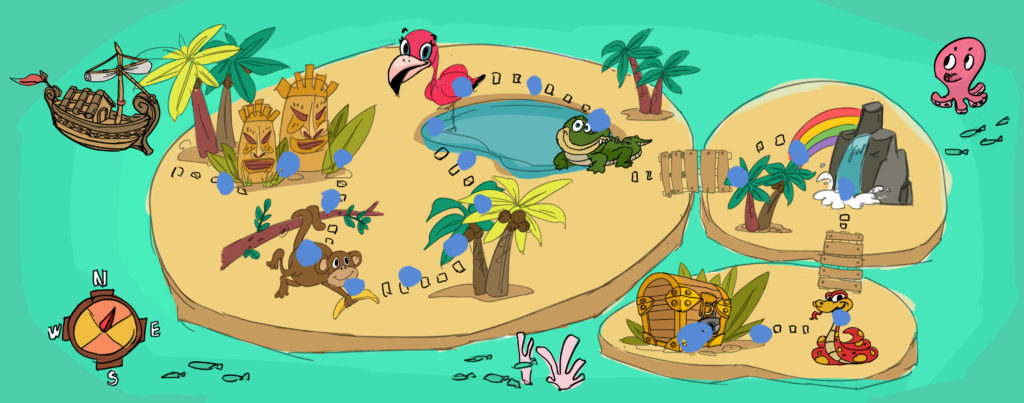Starting Week 11 we finished creating digital versions of our remaining puzzles. In addition we began working on the various aspects of the game that we presented to our playtesters at the end of Week 10.
More Pieces
We added a map to replace the original level select screen. The new map would serve two functions.
- It would display the progression of the game to the player
- Create a more visually appealing method of level section

We also implemented a reward system in the form of trophy’s added to ones treasure room after completing a ‘boss level’. We hoped such an addition would add a motivational factor for completing the game.

Later in the week Jesse Schell played the game, and suggested a new way to show treasure room. Instead of having trophys placed on the desk, have shelves arranged in a geometric way with numbers on them to reinforce the central theme of angles. In addition to this we considered including random treasures which we hoped would add a surprise factor.
Protractor
As part of the gameplay we included a protractor tool for players to use. The protractor acts as scaffolding tool which players who are struggling would ideally use to more effectively solve problems. We hope in the process gain an appreciation for the measurement tool.

The introduction of the tool required careful consideration of how we would introduce it. On one hand we wanted to introduce it in a friendly not invasive way. On the other we wanted to ensure players knew it was there, and could use it when they felt like it.
On our first run through with the protractor implemented was our playtesters not even realizing it was there! Playtesters suggested a more obvious tutorial so we added the tap animation for the protractor tool. On Friday we met with Jessica Hammer to discuss the issue of protractor introduction. Her feedback was to introduce it when cognitive load was less, so on a level which was not introducing too much. Level 3 was to be the lucky one!
We also met Don Rawitsch (creator of Oregon Trail) and he suggested trying to make the treasure room part of the main gameplay because currently it was purely an extrinsic reward. It was a good point but we couldnt do it because no time.
Gem Distribution
Finally towards the end of the week we figured out new method of analyzing puzzles. By more deeply considering the gems placed in puzzles we used a gem distribution analysis which involved counting the gems used, and looking at levels with a lack of gem diversity. This method immediately showed us six levels which we proceeded to fix.
